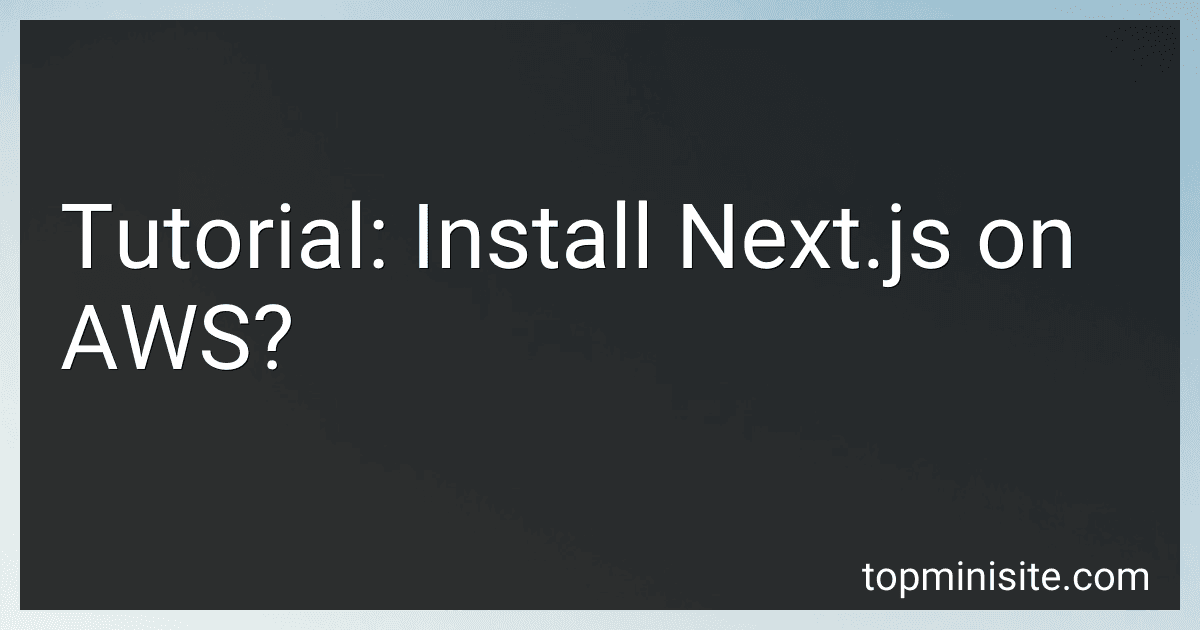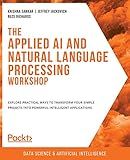Best AWS Hosting Solutions to Buy in December 2025
To install Next.js on AWS (Amazon Web Services), you can follow the following steps:
- First, ensure that you have an AWS account and are logged in.
- Open the AWS Management Console and navigate to the EC2 service.
- Click on "Launch Instance" to create a new EC2 instance.
- In the instance configuration, select an Amazon Machine Image (AMI) that supports Next.js applications, such as an Amazon Linux AMI.
- Choose an instance type based on your requirements and click "Next" to proceed.
- Configure your instance details, such as the number of instances, networking options, and storage settings. Click "Next" once you are done.
- Add any additional storage volumes if needed, and then proceed to configure security groups. Ensure that you open the necessary ports for your Next.js application.
- Review your configuration and click "Launch" to create the EC2 instance.
- After launching the instance, you will need to connect to it using SSH. You can download the necessary SSH key pair if you don't have one already.
- Use an SSH client like PuTTY to connect to your EC2 instance by providing the public IP address or DNS name of the instance.
- Once connected to the instance, update the package manager by running the following command:
sudo yum update -y
- Install Node.js and npm (Node Package Manager) using the command:
curl -o- https://raw.githubusercontent.com/creationix/nvm/v0.34.0/install.sh | bash
nvm install --lts
- Install Next.js globally by running:
npm install -g next
- Now, you can create a new Next.js application by navigating to the desired directory and running:
npx create-next-app
- Follow the prompts to set up your Next.js application, including the project name and other configuration options.
- Once the installation is complete, you can start the Next.js development server by running:
npm run dev
This will start the server and provide you with a local URL to access your Next.js application.
- To make your Next.js application publicly accessible, you need to configure a web server like Nginx or Apache for running the application on a specific domain or subdomain. This step requires additional configuration depending on your specific AWS setup.
These steps provide a general outline of how to install and set up Next.js on AWS. It's important to note that depending on your specific requirements and AWS setup, you may need to make additional configurations or follow alternative methods.
What is the process to update a deployed Next.js application on AWS?
The process to update a deployed Next.js application on AWS involves the following steps:
- Build the updated version of your Next.js application: Update your codebase with the desired changes. Run the build command (npm run build or yarn build) to create the optimized production-ready version of your Next.js application.
- Prepare the deployment package: Create a ZIP file containing all the necessary files for your application. Include the built files from the previous step, along with any additional dependencies or configuration files required.
- Upload the deployment package to AWS S3: Open the AWS S3 console and navigate to the desired S3 bucket. Upload the ZIP file to the S3 bucket, making sure to set the appropriate permissions to make it public or accessible.
- Create a new Elastic Beanstalk version: Open the AWS Elastic Beanstalk console and select your application. Under the "Versions" section, click "Create New Version". Select the uploaded ZIP file as the source and provide any necessary version information.
- Deploy the new version to your environment: Select your environment in the Elastic Beanstalk console. Click "Actions" and then "Deploy New Version". Choose the newly created version and initiate the deployment.
- Monitor the deployment progress: Monitor the Elastic Beanstalk console or the associated CloudWatch logs to observe the deployment progress and ensure it completes successfully.
- Test the updated application: Once the deployment is complete, visit your Next.js application's URL to ensure that it is functioning as expected.
By following these steps, you can update your deployed Next.js application on AWS without disrupting its availability.
How to install required dependencies for a Next.js project using npm?
To install the required dependencies for a Next.js project using npm, follow these steps:
- Open a terminal or command prompt in your project's root directory.
- Initialize a new npm project by running the following command:
npm init -y
This will create a package.json file in your project's root directory.
- Next, install the required dependencies using the npm install command. The required dependencies for a Next.js project typically include next and react:
npm install next react
You can also install any additional dependencies required for your project at this step. For example, if you need to use Node.js build-time scripts or API routes, you can install cross-env and nodemon as follows:
npm install cross-env nodemon
- After running the npm install command, npm will download and install the specified dependencies into a node_modules directory within your project.
- Once the installation is complete, your project is ready to use the installed dependencies.
What is Babel and why is it needed for Next.js installation?
Babel is a JavaScript compiler that allows developers to use the latest features of the JavaScript language that might not be supported by default in all browsers or environments. It transforms modern JavaScript code into a backward-compatible version that can run in older browsers or different environments.
Next.js is a React framework for building server-rendered applications. It provides many features and optimizations out of the box, including server-side rendering, automatic code splitting, static site generation, and more.
As Next.js supports server-side rendering, it needs to run on the server, where modern JavaScript features might not be supported by default. Therefore, Babel is needed to transform the Next.js codebase into a compatible version to be executed on the server. Babel ensures that the code written using the latest JavaScript syntax is transpiled into a version that can be understood by the server and client environments. This compatibility allows developers to write code using modern language features without worrying about browser support or server compatibility.



